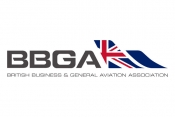Access for the regions must be major public obligation in new runway decision argues NCTF
Tuesday 17th March 2015
Equitable access for the UK's regions must be a key consideration when the case for future runway capacity in the SE is determined this summer, Lord John Shipley, Chair of the National Connectivity Task Force, highlighted today.
Outlining the conclusions of a comprehensive and independent study carried out by the Task Force 'Air Connectivity Matters - Linking the Nations and Regions of Britain to London and the World,' he stressed this was a "one-time, transformational opportunity" to change Government policy on regional air access, whichever runway scheme is selected.
Addressing an audience of policy-makers, aviation and travel industry representatives and regional and business leaders, Lord Shipley stated:
"There is a chance to institute a major rethink of DfT's policy of non-intervention, which for 20 years has de facto prioritised international air access over domestic services to London's two largest airports. The effect of the repeated failure of Government to make strategically important decisions about runway capacity in the South East over the last quarter of a century and then see them through, is a heavily congested and impaired market which forces UK regions to rely on overseas hubs for their global connectivity."
"However the existing UK policy can no longer be defended when there is the prospect of over 250,000 additional take-off and landing slots being released when a new runway opens. Moreover, a failure to act now and adopt some relatively straightforward and low cost interim solutions, would be completely at odds with broader Government policy priorities on economic growth and rebalancing," he stressed.
Call for early action on runway capacity needs.
Responses to NCTF's questionnaire and discussions with stakeholders from the aviation sector, business communities and cities and regions outside London and the South East, reflected a groundswell of opinion that early action should be taken in advance of new runway capacity coming on line. Otherwise, UK regions, nations and Crown Dependencies become 'second class citizens' by being forced to rely on overseas hubs while they wait for new SE runway capacity, the NCTF has concluded.
"But our analysis indicates that Amsterdam Schiphol will have effectively reached practical operating capacity in 2017 while Paris CDG and Frankfurt Airports will be similarly full by 2030. Already the peak 07:00-09:00 am period shows Amsterdam with a 92% runway utilisation, Paris 87% and Frankfurt 95% - rendering few opportunities for the future development of new routes from the UK regions and potentially threatening, in the medium to long term, some of those that already exist" highlighted Lord Shipley.
The National Connectivity Task Force, established in the early autumn last year to focus on the case for enhanced regional air connectivity, studied six scenarios for delivering enhanced regional air access in the context of new runway capacity in order to inform its conclusions.
The report also highlighted that:
• Outputs from the Task Force's online questionnaire survey indicated that 95% of those who responded agreed it was more important to be connected to a UK hub, rather than an EU hub (45%), while 80% wanted to see interim measures to improve regional air access to London improved quickly rather than simply wait until a new runway is built.
• Standard measures of accessibility should be at the heart of government policy in relation to air access from the UK regions. This means that air travellers from the regions should be able to:
- accomplish four to six hours of business in London and still get home the same day, or
- reach global cities (with the possible exception of those in the Asia Pacific region), one stop, within 24 hours.
• As practised in Europe, mechanisms such as the use of Public Service Obligations (PSO) should be put in place where there are no regional air links, especially where there is a potentially viable market which is not served by high speed rail.
• The need for affordable pricing in regard to Heathrow and/or Gatwick for regional services in that charges levied at the main airports on regional aircraft are tailored to what is affordable if operators wish to serve them.
Formally presenting the 100-plus page report which is supported by sixteen detailed Research Papers, Lord Shipley stated that:
"New South East runway capacity must benefit the whole of the UK and not just London and the South East".
He went on to note that: "If the preferred choice for additional capacity is Gatwick Airport with its point to point traffic focus there will remain a strategic requirement to promote regional links to other hubs in order to meet equitable global access".
An alternative option identified in The Task Force's report is to make use of spare capacity at RAF Northolt to serve as a regional satellite, capable of providing acceptable access to Heathrow's long haul network. This could become a permanent solution if Heathrow does not get a new runway.
The loss or lack of a London link, Lord Shipley noted, has challenged the long-term viability of some UK regional airports. Blackpool and Plymouth have recently temporarily or permanently ceased hosting air services, while Prestwick Airport was only saved from closure by the intervention of Scottish Government.
The National Connectivity Task Force engaged with a range of stakeholders* across the regions, nations and Crown Dependencies via an online questionnaire and through bi-lateral meetings with public bodies exercising relevant responsibilities. This included the Department for Transport, the Civil Aviation Authority (CAA), the European Commission, Devolved Administrations, Crown Dependencies, regional carrier and airport representatives, regional representatives and scheme promoters.
◊ NCTF reviewed the following six options:-
Option Description
Do Nothing No new runway at either Gatwick or Heathrow
1a Second runway at Gatwick
1a As per 1a but with Northolt converted to a satellite linked to Heathrow
2a Third runway at Heathrow - Low Regional Growth and Slot Allocation
2b Third runway at Heathrow - Base Regional Growth and Slot Allocation
2c Third runway at Heathrow - High Regional Growth and Slot Allocation
Option 1b is a variant of 1a with its inclusion of a temporary Northolt satellite operation, which could become permanent if Heathrow is not able to build a new runway.
Similarly Options 2a, 2b and 2c are all variants associated with a third runway enhancing Heathrow as a UK national hub, with varying degrees of Government intervention to secure slots for regional services.
Notes:
1.a. Under the 'Do Nothing' option capacity at Gatwick and Heathrow, the rest of the London airport system and at other UK airports, remains as now.
1.b. The 1b option for Gatwick is improved by additional intervention to bring Northolt into play.
1.c. The 2b option for Heathrow offers the most attractive regional outcome in regard to incremental benefits against incremental costs
About The National Connectivity Taskforce
1. *Members of the Task Force, who were unpaid, include Sir Rod Eddington (former CEO, British Airways), Sir Peter Rigby, Sandie Dawe (former CEO, Visit Britain) and Neil Pakey (CEO, Shannon Airport and former president, Airport Operators Association), academics from Cambridge and Ghent Universities and University College London and business representatives from seven different parts of the UK (Scotland, Wales, Northern Ireland, the North East & Yorkshire, the North West, the South West of England and the Midlands). The full line up is as follows: Suzanne Bond, CEO, Cornwall Development Company; lestyn Davies, Head of External Relations, Federation of Small Business (Wales, Scotland and NI); Sandie Dawe, Former CEO, Visit Britain; Prof. Ben Derudder, Prof. Human Geography, Ghent University and Director of Globalisation and World Cities Network; Dan Fell, Chief Executive, Doncaster Chamber of Commerce; Sir Rod Eddington, Ex-CEO, British Airways; Lord Haskins, House of Lords, Chair Humber LEP; Paul Hildreth, Visiting Fellow, SURF - University of Salford at Manchester; Doreen McKenzie, CEO, Knock Travel, Board Member of ABTA; Derick Murray, Director, Nestrans; Neil Pakey, CEO Shannon Group, ex-President of UK Airport Operators Association; Sir Peter Rigby, Chair of Patriot Aerospace and Ex chair Warwickshire & Coventry LEP; Lord Shipley OBE, Chair; Jenny Stewart, CEO Liverpool Chamber of Commerce and Professor Peter Tyler, Department of Land Economy, University of Cambridge.
2. All biographies are available on the Task Force's web site:
www.nationalconnectivitytaskforce.co.uk
3. The concept of setting up the Task Force was first set out in May 2014 by Heathrow Airport Ltd (HAL) in its submission to the Airports Commission. HAL facilitated the work of the Task Force by sponsoring its Secretariat and Research Programme. However, in line with the Task Force's independent status - its Terms of Reference, the scope of the research undertaken, the stakeholders it engaged with and the recommendations that have formed the conclusions to its final report, have been determined by the Task Force alone.
Latest News

Wednesday 19th February 2025
ACIA Aero Leasing places ATR72-500 Bulk Freighter with Canada’s KF Aerospace

Wednesday 19th February 2025
Serious consequences for charters operating without a valid UK Foreign Carrier Permit, warns BBGA






Get Social
Twitter Linked in Facebook Instagram